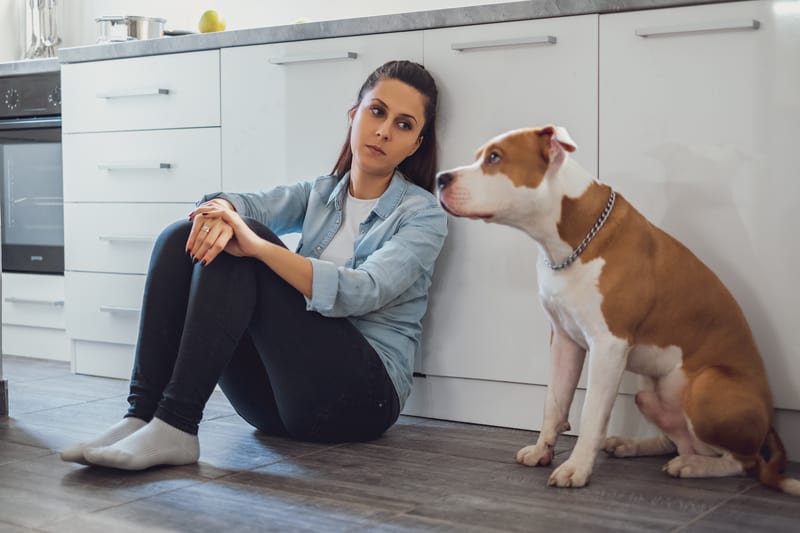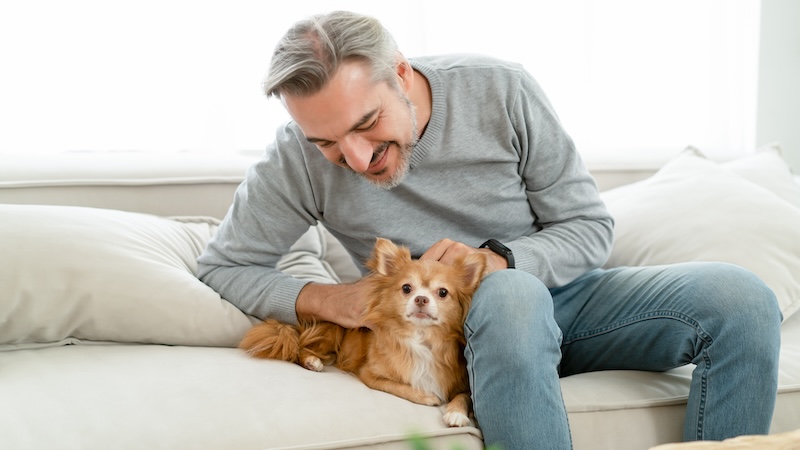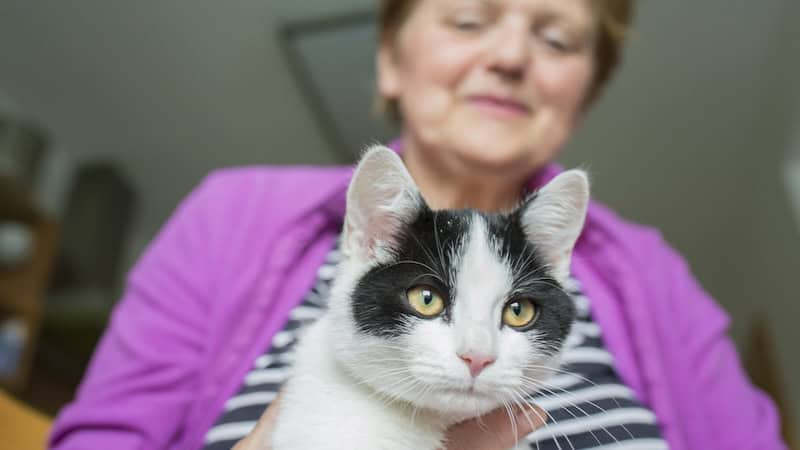Dear Cathy: My frightened cat won’t let us hold her
And more answers on living with and loving our pets

A battle-scarred cat who doesn’t like being picked up and a dog who pees inside – including on the new boyfriend’s computer. Animal expert Cathy M. Rosenthal offers advice on this frightened cat and insecure dog.
Dear Cathy: We have an 18-month-old tabby. When we brought her home from the shelter, she had an upper respiratory infection and chlamydia, which was passed on from her mother. For six months, we had to “burrito” her to give her eye drops. Now, if we pick her up, she only allows us to hold her for literally 10 seconds before she starts to hiss, bite, and scratch, which makes it impossible to give her routine nail cuts or get her into her cat carrier for a trip to the vet.
Our vet prescribed a tranquilizer for vet visits, but even under the influence, she becomes a devil cat at the vet, escaping and running around the office, hissing and biting. We tried the same tranquilizers at home for her nail clipping with the same results.
We think this behavior developed from her earlier medication routine. She is otherwise a sweet cat and will brush up against us and allow us to pet her. What can we do to regain her trust?
– Frances, Levittown, New York
Dear Frances: While some cats simply don’t like to be held, early experiences can shape behaviors. Let’s replace an unhappy memory with a new experience associated with food. Here’s what you can do.
Get her a feline pheromone collar to wear. These have a calming effect on cats. Let her wear the collar for a few days so she is in the proper mindset for the training.
When you start training, pick her up – but only a few feet off the floor and only for a few seconds. Talk to her in a sweet voice, and then immediately put her down in front of a tempting treat or special wet cat food. It’s important you put her down before she reacts. Essentially, you are rewiring her brain to associate being held with a special treat. For the next few weeks, pick her up only to give her the special treat or food, increasing how long you hold her and how high off the floor.
Cats and Art: A Classic Pairing
After a few weeks, re-introduce nail trims, but only do a paw a day, followed by a treat. When taking her to the vet, drop a towel over her to pick her up and put her in the crate. With time, you can build up her tolerance to these things. But remember, some cats simply don’t like to be held and prefer to sit on your lap instead.
 Dear Cathy: I have a 7-year-old dog named Baxter. I have had him for five years. I have a doggy door that he uses to go into a fenced backyard. However, he pees on the dishwasher, refrigerator, washing machine, couch, and cardboard boxes. If my new boyfriend leaves the door to his room open, Baxter pees on surfaces in his room, most recently on a computer sitting on the floor. I have never caught him peeing. I always just clean up the mess and do not yell at him because he is sensitive. I am at a loss at what to do.
Dear Cathy: I have a 7-year-old dog named Baxter. I have had him for five years. I have a doggy door that he uses to go into a fenced backyard. However, he pees on the dishwasher, refrigerator, washing machine, couch, and cardboard boxes. If my new boyfriend leaves the door to his room open, Baxter pees on surfaces in his room, most recently on a computer sitting on the floor. I have never caught him peeing. I always just clean up the mess and do not yell at him because he is sensitive. I am at a loss at what to do.
– Autumn, Littleton, Colorado
Dear Autumn: Your dog is likely marking the home to show that it is his, and the new boyfriend likely triggered the behavior even more. There are a few ways to address this problem. First, make sure your dog is fixed. Second, get a canine pheromone collar for him to wear so he is more relaxed and receptive to training. Third, make sure the house is picked up to limit his places to pee. No computers, cardboard boxes or dirty laundry on the floor.
Next, use an enzymatic cleaner (available at the pet store) to remove all traces of the urine so he is not drawn back to the same spot. Then, start leaving treats in these areas for him to find. If he thinks he might find a treat by the dishwasher, he is less likely to pee on it.
Don’t rely on the doggy door. Routinely take him outside to reduce his ability to mark.
Finally, have your boyfriend feed your dog, give him treats, pet him, and take him for walks. They need to forge a relationship since your dog may be feeling anxious with his presence. The walks also will encourage Baxter to mark outside, which should help limit his inside offenses.
Cathy M. Rosenthal is a longtime animal advocate, author, columnist, and pet expert who has more than 25 years in the animal welfare field. Send your pet questions, stories, and tips to cathy@petpundit.com. Please include your name, city, and state. You can follow her @cathymrosenthal.
© Tribune Content Agency, LLC.


